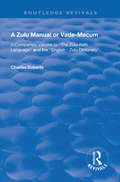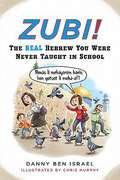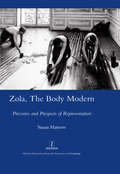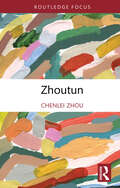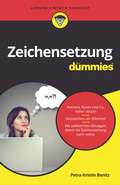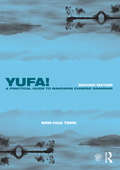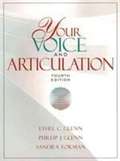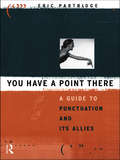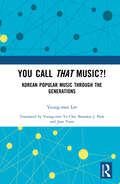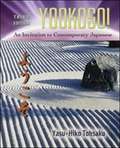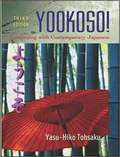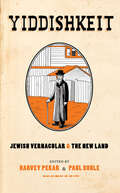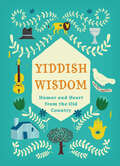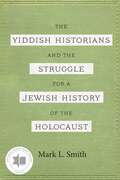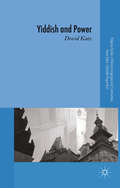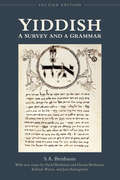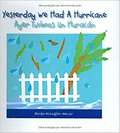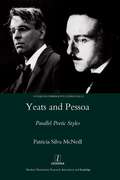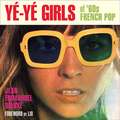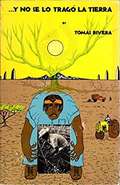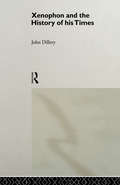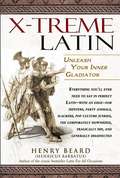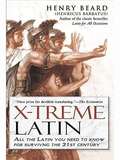- Table View
- List View
A Zulu Manual or Vade-Mecum: A Companion Volume to ''The Zulu-Kafir Language'', And The '' English - Zulu Dictonary''. (Routledge Revivals)
by Charles RobertsPublished in 1900, this book provides a companion volume to the Zulu Kafir Language and the English Zulu Dictionary. Including a dictionary and examples of language structure and grammar, this book makes Zulu accessible to all levels of learner.
Zubi!
by Ben Israel DannyHow to talk dirty and influence people-in Hebrew! You can study Hebrew for years, but do you really know how to talk like a native speaker? The next book in Plume's foreign language series, Zubi! will make sure you learn all the colorful vernacular words and phrases for a variety of situations,including insulting your neighbor,flirting with the hot guy or girl at the club, and even chatting online-not to mention plenty of Hebrew words that are. . . well, best not to mention. Accessible and useful to complete novices, intermediate students of Hebrew, or just anyone who enjoys cursing in other languages, this irreverent guide is packed with hilarious examples and stories to acquaint the reader not only with popular terms but how they are used in everyday speech. With clever illustrations, Zubi! covers it all-from essential basics to the hottest new slang-and proves that no language is too sacred. .
Zola, The Body Modern: Pressures and Prospects of Representation
by Susan HarrowEmile Zola's reputation as a landmark European novelist is undisputed. His monumental achievement, the novel cycle Les Rougon-Macquart: Histoire sociale et naturelle d'une famille sous le Second Empire (1871-1893), fixed his status as a major writer in the naturalist tradition. Is there any more to be said? Susan Harrow answers boldly in the affirmative, challenging the commonplace view that Zola's writing is predictable, prolix and transparent (what Barthes called 'readerly', for which read 'tedious'). Harrow exposes the modernist and postmodernist strategies which surface in the Rougon-Macquart novels, and reveals Zola's innovatory representation of the body captured here at work, at war, at play, at rest, and in arresting abstraction. Informed by critical thought from Barthes and Deleuze to Michel de Certeau and Anthony Giddens, Zola, the Body Modern offers a model for how we can revitalize our understanding of the canonical nineteenth-century European novel, and learn to travel more flexibly between parameters of century, style and aesthetics.
Zhoutun (Routledge World Languages)
by Chenlei ZhouThis book presents a description of the grammar of Zhoutun, an endangered Sinitic variety spoken by less than 1000 people in the Qinghai Province of northwest China. With vocabulary predominantly from Chinese and Tibetan syntax, Zhoutun is one of the Sinitic varieties most distant from Standard Chinese, with unexpected typological features like, for example, case markers, rigid SOV word order, simplified tonal system, negative copula as a disjunctive coordinator and "locutor-referential pronoun" which is not found in Chinese and in many languages. Zhoutun is also a representative variety of the Gansu-Qinghai linguistic area in which Mongolic and Turkic languages coexist with Tibetan and Chinese dialects from a long time. This book also describes the sociolinguistic and sociohistorical contexts of Zhoutun. It should be of interest to specialists and students of language contact, linguistic typology, Chinese dialectology, language geography, anthropological linguistics, sociolinguistics, folklore studies, and preservation of endangered languages.
Zeichensetzung für Dummies (Für Dummies)
by Petra-Kristin BonitzIst bei Ihnen die Zeichensetzung eher Gefühlssache? Sind Sie manchmal unsicher, wo ein Komma stehen muss und wo nicht? Dann schafft dieses Buch Abhilfe! Systematisch und gut verständlich erklärt Ihnen Petra-Kristin Bonitz, warum Satzzeichen gesetzt werden. Sie bringt Ihnen Satzstrukturen wieder ins Gedächtnis und erklärt anschaulich die Regeln, aber auch die Freiheiten im Rahmen der Zeichensetzung. Erfahren Sie zum Beispiel, ob und wie Sie Kommas bei Aufzählungen, Nebensätzen oder Infinitiven mit ?zu? setzen oder das eher exotische Semikolon verwenden. Darüber hinaus lassen sich Satzzeichen als Stilmittel einsetzen - Gedankenstrich, runde Klammern oder doch lieber der Doppelpunkt? Zahlreiche Übungen helfen Ihnen, das Gelernte anzuwenden und zu trainieren.
Yufa! A Practical Guide to Mandarin Chinese Grammar (Routledge Concise Grammars)
by Wen-Hua TengYufa! A Practical Guide to Mandarin Chinese Grammar takes a unique approach to explaining the major topics of Mandarin Chinese grammar. The book is presented in two sections: the core structures of Chinese grammar, and the practical use of the Chinese language. Key features include: Chinese characters, pinyin and English translations Realistic scenarios to provide you with an interesting context in which to learn grammar Varied and imaginative exercises so you can review your progress easily.With straightforward descriptions, numerous exercises, and examples that are rooted in realistic situations, the author shows you how grammar is used in everyday life. This new second edition has been fully revised and updated throughout and continues to be one of the clearest and most comprehensive pedagogical grammars available.
Your Voice And Articulation (Fourth Edition)
by Ethel C. Glenn Phillip J. Glenn Sandra H. FormanFourth edition of a text which offers explanations of the processes by which we produce voice and speech sounds, such as consonants and vowels, in American English. Included are exercises and practice guidelines for enhancing or correcting voice quality and the pronunciation of sounds and words.
You Have a Point There: A Guide to Punctuation and Its Allies
by Eric PartridgeThis standard work on punctuation has long been judged the foremost study of the subject. It reveals punctuation to be both an indispensable craft and an invaluable art - a friend, not an enemy.
You Call That Music?!: Korean Popular Music Through the Generations
by Young-mee LeeYou Call That Music?!: Korean Popular Music Through the Generations provides a critical overview of the history of Korean popular music from 1920 to the 2000s from the perspective of cultural history. First published in Korean in 2017 by one of the best-known critics, Lee Young-Mee, this book is a timely and much-needed source of information on Korean popular music of the past hundred years. Through this English translation, readers are able to make meaningful connections between specific forms of Korean popular music of various periods and the contemporaneous Korean social and political circumstances. Structured around the central theme of generational conflict, the book provides readers with an accessible way to engage with Korea’s social history and a greater understanding of how specific musical works, genres and styles fit into that history. Its strong narrative force helps illuminate the connections between modern Korean social history and the particular trends of musical production and their reception through the decades. You Call That Music?! is an invaluable resource for those researching and studying Korean popular music specifically as well as Korea’s cultural and social history.
Yiddishkeit: Jewish Vernacular & the New Land
by Harvey Pekar and Paul BuhleA “fascinating and enlightening” collection of comics and writings that explore the Yiddish language and the Jewish experience (The Miami Herald).We hear words like nosh, schlep, and schmutz, but how did they come to pepper American English? In Yiddishkeit, Harvey Pekar and Paul Buhle trace the far-reaching influences of Yiddish from medieval Europe to the tenements of New York’s Lower East Side. This comics anthology contains original stories by such notable writers and artists as Barry Deutsch, Peter Kuper, Spain Rodriguez, and Sharon Rudahl. Through illustrations, comics art, and a full-length play, four major themes are explored: culture, performance, assimilation, and the revival of the language. “The book is about what Neal Gabler in his introduction labels ‘Jewish sensibility.’…he writes: ‘You really can’t define Yiddishkeit neatly in words or pictures. You sort of have to feel it by wading into it.’ The book does this with gusto.” —TheNew York Times“As colorful, bawdy, and charming as the culture it seeks to represent.” —Print magazine“Brimming with the charm and flavor of its subject…a genuinely compelling, scholarly comics experience.” —Publishers Weekly“A book that truly informs about Jewish culture and, in the process, challenges readers to pick apart their own vocabulary.” —Chicago Tribune“A postvernacular tour de force.” —The Forward“With a loving eye Pekar and Buhle extract moments and personalities from Yiddish history.” —Hadassah“Gorgeous comix-style portraits of Yiddish writers.”––Tablet “Yiddishkeit has managed to survive, if just barely…because [it] is an essential part of both the Jewish and the human experience.” —Neal Gabler, author of An Empire of Their Own: How the Jews Invented Hollywood, from his introduction“A scrumptious smorgasbord of comics, essays, and illustrations…concentrated tastes, with historical context, of Yiddish theater, literature, characters and culture.” —Heeb magazine
Yiddish Wisdom: Humor and Heart from the Old Country
by Christopher Silas NealDecade after decade, Yiddish proverbs continue to capture the humor, warmth, and traditions of Jewish life. Now, the beloved Yiddish Wisdom has been expanded with even more proverbs and fresh illustrations to be cherished by a new generation. With more than 150 folk sayings translated in Yiddish and English--from the whimsical and witty (Dress up a broom and it will also look nice/Az men batziert a bezem iz er oich shain) to the poignant (When one must, one can/Az me muz, ken men) and practical (When you look to the heights, hold on to your hat/Az du kukst oif hoicheh zachen, halt tsu dos hitl)--this treasured volume is the perfect gift for any celebration.
The Yiddish Historians and the Struggle for a Jewish History of the Holocaust
by Mark L. SmithThe Yiddish Historians and the Struggle for a Jewish History of the Holocaust identifies the Yiddish historians who created a distinctively Jewish approach to writing Holocaust history in the early years following World War II. Author Mark L. Smith explains that these scholars survived the Nazi invasion of Eastern Europe, yet they have not previously been recognized as a specific group who were united by a common research agenda and a commitment to sharing their work with the worldwide community of Yiddish-speaking survivors. These Yiddish historians studied the history of the Holocaust from the perspective of its Jewish victims, focusing on the internal aspects of daily life in the ghettos and camps under Nazi occupation and stressing the importance of relying on Jewish sources and the urgency of collecting survivor testimonies, eyewitness accounts, and memoirs. With an aim to dispel the accusations of cowardice and passivity that arose against the Jewish victims of Nazism, these historians created both a vigorous defense and also a daring offense. They understood that most of those who survived did so because they had engaged in a daily struggle against conditions imposed by the Nazis to hasten their deaths. The redemption of Jewish honor through this recognition is the most innovative contribution by the Yiddish historians. It is the area in which they most influenced the research agendas of nearly all subsequent scholars while also disturbing certain accepted truths, including the beliefs that the earliest Holocaust research focused on the Nazi perpetrators, that research on the victims commenced only in the early 1960s and that Holocaust study developed as an academic discipline separate from Jewish history. Now, with writings in Yiddish journals and books in Europe, Israel, and North and South America having been recovered, listed, and given careful discussion, former ideas must yield before the Yiddish historians’ published works. The Yiddish Historians and the Struggle for a Jewish History of the Holocaust is an eye-opening monograph that will appeal to Holocaust and Jewish studies scholars, students, and general readers.
Yiddish and Power
by Dovid KatzYiddish and Power surveys the social, linguistic and intellectual history of the Yiddish language within the traditional civilisation of Jewish Ashkenaz in central, and then in eastern Europe, and its interaction with the surrounding non-Jewish culture. It explores the various ways in which Yiddish has empowered masses and served political agendas.
Yiddish: A Survey and a Grammar, Second Edition
by Kalman Weiser Eleazar Birnbaum S. A. Birnbaum David Birnbaum Jean BaumgartenOne of the great Yiddish scholars of the twentieth century, S.A. Birnbaum (1891-1989) published Yiddish: A Survey and a Grammar in 1979 towards the end of a long and prolific career. Unlike other grammars and study guides for English speakers, Yiddish: A Survey and a Grammar fully describes the Southern Yiddish dialect and pronunciation used today by most native speakers, while also taking into account Northern Yiddish and Standard Yiddish, associated with secularist and academic circles. The book also includes specimens of Yiddish prose and poetic texts spanning eight centuries, sampling Yiddish literature from the medieval to modern eras across its vast European geographic expanse.The second edition of Yiddish: A Survey and a Grammar makes this classic text available again to students, teachers, and Yiddish-speakers alike. Featuring three new introductory essays by noted Yiddish scholars, a corrected version of the text, and an expanded and updated bibliography, this book is essential reading for any serious student of Yiddish and its culture.
Yesterday We Had a Hurricane / Ayer Tuvimos Un Huracán
by Deirdre McLaughlin MercierThis bilingual edition re-tells the experience of a hurricane as seen through the eyes of a young child. Young readers will learn all about these big storms that come from the ocean. They'll find out about the effects of wind and rain, as well as some of the more lighthearted and practical alternatives to doing without electricity.
Yeats and Pessoa: Parallel Poetic Styles
by Patricia Silva-McNeillW. B. Yeats and Fernando Pessoa (1888-1935) regarded style as a tool for metaphysical inquiry and, consequently, they adopted distinct poetic styles to convey different attitudes towards experience. Silva-McNeill's study examines how the poets' stylistic diversification was a means of rehearsing different existential and aesthetic stances. It identifies parallels between their styles from a comparative case studies approach. Their stylistic masks allowed them to maintain the subjectivity and authenticity associated with the lyrical genre, while simultaneously attaining greater objectivity and conveying multiple perspectives. The poets continuously transformed the fond and form of their verse, creating a protean lyrical voice that expressed their multilateral poetic temperament and reflected the depersonalisation and formal experimentalism of the modern lyric.
Yé-Yé Girls of '60s French Pop
by Lio Jean-Emmanuel DeluxeThis delightfully illustrated exploration into '60s French pop, and the women who built it, reveals yé-yé music's hip sensuality, humor, style and wit. We hear from and about Françoise Hardy, France Gall, Brigitte Bardot, Sylvie Vartan and dozens of other modern Lolitas, and the recklessly naughty Serge Gainsbourg. Modern-day yé-yé avatar Lio has written the book's Foreword.
Yapese Alphabet (Island Alphabet Books)
by Lori PhillipsThis book is part of the Island Alphabet Books series, which features languages and children's artwork from the U.S.-affiliated Pacific. Each book contains the complete alphabet for the language, four or five examples for each letter, and a word list with English translations. The series is published by PREL, a non- profit corporation that works collaboratively with school systems to enhance education across the Pacific.
Xenophon And The History Of His Times
by John DilleryXenophon and the History of his Times examines Xenophon's longer historical works, the Hellenica and the Anabasis. Dillery considers how far these texts reflect the Greek intellectual world of the fourth and fifth centuries B.C., rather than focusing on the traditional question of how accurate they are as histories. Through analysis of the complete corpus of Xenophon's work, and the writings of his contemporaries, Xenophon is shown to be very much a man of his times, concerned with topical issues ranging from panhellenism and utopia to how far the gods controlled human history.This book will be valuable reading for students on ancient history courses and for all those interested in Greek political and philosophical thought.
X-Treme Latin: Lingua Latina Extrema
by Henry BeardEverything you'll need to say in Latin for hipsters, party animals, slackers, pop-culture junkies, the corporately downsized and generally disaffected
X-Treme Latin
by Henry BeardIn staff meetings and singles bars, on freeways and fairways, there are aggravating people lurking everywhere these days. But bestselling humorist Henry Beard has the perfect comeback for all prickly situations, offering a slew of quips your nemesis won't soon forget . . . or even understand. Beard's gift is his ability to make fun of popular culture and the current zeitgeist. In X-Treme Latin he provides Latin with an attitude, an indispensable phrasebook that taps the secret power of Latin to deliver, in total safety, hundreds of impeccable put-downs, comebacks, and wisecracks. Within its pages you will learn how to insult or fire coworkers; blame corporate scandals on someone else; cheer at a World Wrestling Entertainment match; talk back to your computer, TV, or Game Boy; deal with your road rage; evade threatening situations; snowboard in style; talk like Tony Soprano; and much more. With dozens more zingers for quashing e-mail pranks, psyching out your golf opponent, giving backhanded compliments, and evading awkward questions, X-Treme Latin is destined for magnus popularity and will have readers cheering, "Celebremus!"
